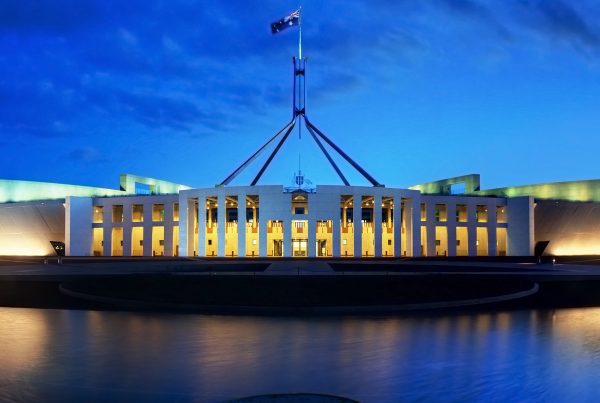It would be a brave businessman who plans for the future, with forecasts based on the carbon tax. Taking a leadership role in climate change, is mired in politics, argument and confusion. Science and rational debate have been forced to take a ‘back seat’
Written in late April, this is how one Australian sees it. David Fogarty is a Reuters correspondent, an Australian living in Singapore, and specialising in climate policy and climate science.
Australia carbon tax clouds power picture, adds risks
* CO2 price meant to help drive power sector investment
* Yet political uncertainty, costs raise risks
By David Fogarty (Climate Change correspondent for Reuters)
SINGAPORE, April 27 (Reuters) – After years of wrenching debate, a carbon tax on Australian industry starts in July, but instead of bringing much-needed investment certainty, the scheme is delivering the opposite.
Much of Australian’s power sector is struggling to access cheap, long-term financing on worries over the future of the carbon tax scheme, which is meant to provide a long-term price signal to encourage industries to cut their emissions.
Instead, political uncertainty is undermining more than $200 billion of investment the government says is needed to clean-up the nation’s ageing coal-fired power sector.
The opposition, which is well ahead in the polls, has vowed to scrap the carbon tax if it wins power.
“Because it’s a tax on power and a tax on transport, it will drive up every single price in our economy,” Opposition leader Tony Abbott said in a speech last week.
Most voters are also opposed to the scheme, which could cost Prime Minister Julia Gillard an election slated for 2013.
Opposition-run states, such as Victoria, Queensland and New South Wales, are also pushing back on climate programmes, further clouding the regulatory picture and hampering refinancing of existing power plants and funding of new ones.
“It’s very difficult because there is so much uncertainty as to what impact the current tax would have on cash flows. And then there is also the uncertainty as to will it survive and if it doesn’t survive, what will replace it?” said David Graham, head of energy, Asia-Pacific, of WestLB in Sydney, which lends to large power projects in Australia.
Because there was no bipartisan political support, there would always be questions about carbon costs over the life of a coal or gas-fired power station, he said.
$1.1 BILLION WRITE-DOWN
Underscoring those costs, Macquarie Generation, a large coal-fired power generator and Australia’s top carbon polluter, said it had written down the value of its assets by nearly A$1.1 billion in its latest half-yearly report due to the carbon tax.
“We anticipate we will have to absorb between and 20 and 40 percent of our carbon liability, which is a couple of hundred million dollars a year and that’s essentially our profits,” said a spokesman for the firm.
Under the carbon scheme, about 500 of the country’s top greenhouse gas emitters will pay A$23 ($23.85) for every tonne of carbon dioxide (CO2) emissions from July 1.
A fixed-price period runs for three years before emissions trading starts in July, 2015, with no clarity on carbon prices beyond an initial floor and cap till 2018.
Adding to uncertainty, electricity futures are traded only out to 2014. A plunge in European and U.N. carbon prices has also added to concerns on future carbon price volatility, along with a failure to agree a broader pact to fight climate change.
A draft Australian government white paper says that under a carbon price more than $200 billion will need to be spent on new generation capacity to 2050. About a quarter gas-fired capacity, $100 billion on renewables and up to $65 billion in coal, primarily carbon capture and storage.
Yet since 1998, only about $12 billion has been spent on new electricity generation, it says, adding that about $80 billion could be needed over the next two decades.
Gillard says carbon pricing is the best way of reining in emissions, among the highest per-capita for developed nations. A third of Australia’s CO2 emissions come from the power sector.
“On new projects, the only new build stuff we’ve seen has been around the renewables space but even that’s slowed down,” Graham told Reuters, adding refinancing for existing coal-fired power stations was about taking the least amount of risk.
“With refinancings, the banking community doesn’t want to take the risk, they want to park it on the sponsors. So we’re seeing shorter tenors, temporary holding-pattern structures, shorter maturities,” he said during a recent trip to Singapore.
FEELING THE HEAT
Victoria is feeling the most heat because of its reliance on brown coal to generate power. Brown coal is far more emissions-intensive than black coal and gas, with the state’s power plants producing triple the CO2 than combined-cycle gas power stations.
All four private Victorian brown coal-fired power stations, as well as a Queensland power station, have to refinance between A$4.5 billion and A$6.5 billion in debt by the end of this year.
These include Hazelwood owned by International Power GDF Suez , one of Victoria’s oldest plants. Bankers looking at refinancing this plant and several others are reluctant to provide more than a three-year tenor and will ask for margins between 380 and 425 basis points, Thomson Reuters publication PFI reported recently.
“There hasn’t been a lot of investment for an extended period of time and that reflects the investment community’s view of the political baseline,” said Paul Finn, managing director, global loans, Asia-Pacific, Europe and America, for ANZ bank , a leading financier to the power sector.
While green energy projects had been able to access longer tenor debt than coal-fired plants of late, long-term financing was still possible, he said, given power plants are meant to operate for decades and energy demand will keep growing.
“This applies regardless of fuel type,” he told Reuters, adding CO2 emissions were only a part of the financing equation.
Generators and analysts see the CO2 tax as unlikely to displace existing coal-fired power stations soon, and they could remain viable unless carbon prices surge towards A$100 a tonne.
“The carbon price has got to be a very big number for gas to become cheaper than coal,” Philip St. Baker, CEO of electricity generator and retailer ERM Power, told Reuters.
“In terms of new-build, the type of plant that’s going to be needed to be built is gas-peaking plants,” he said. “There’s not a lot requirement for baseload power this decade,” he added.
ERM has about 4,500 megawatts of gas-fired power plants under development or planned, but also sees issues on financing.
“We won’t get FID (final investment decision) until the market conditions are there and the regulatory conditions to support the banking of the project. And they aren’t there yet.” ($1 = 0.9642 Australian dollars) (Additional reporting by James Grubel in Canberra, John Arbouw of PFI and Peter Hinton in Sydney; Editing by Ed Davies)





